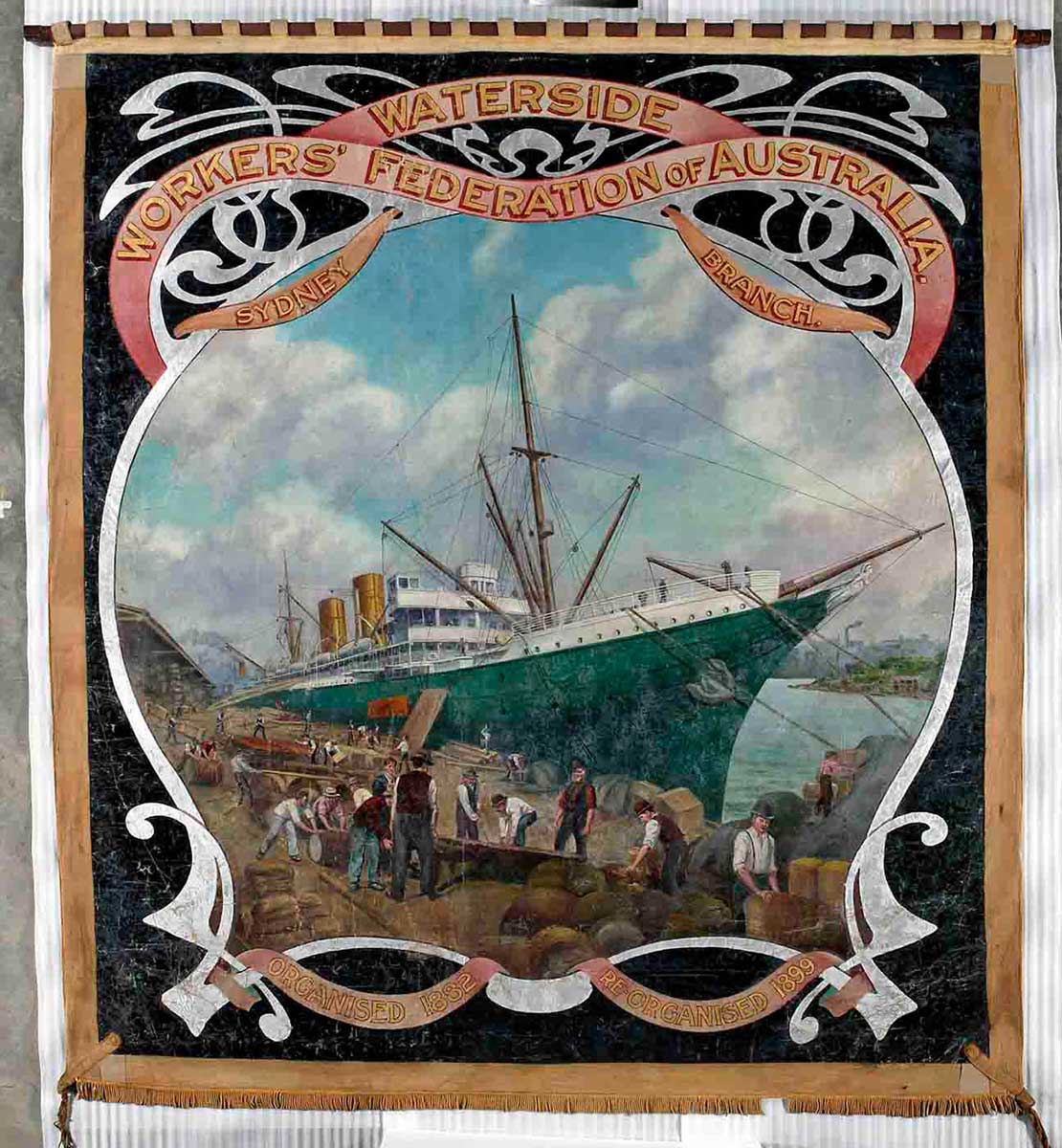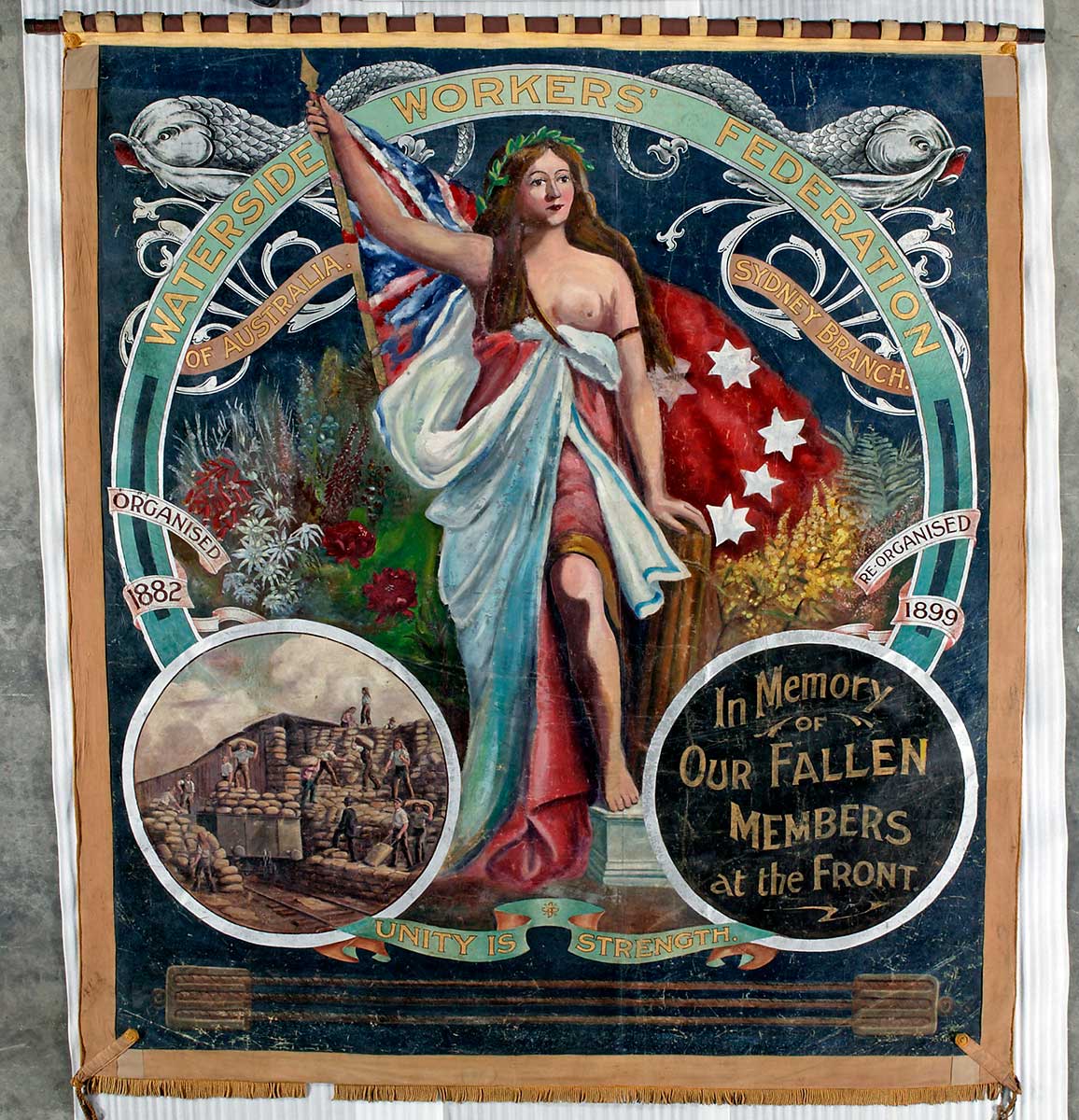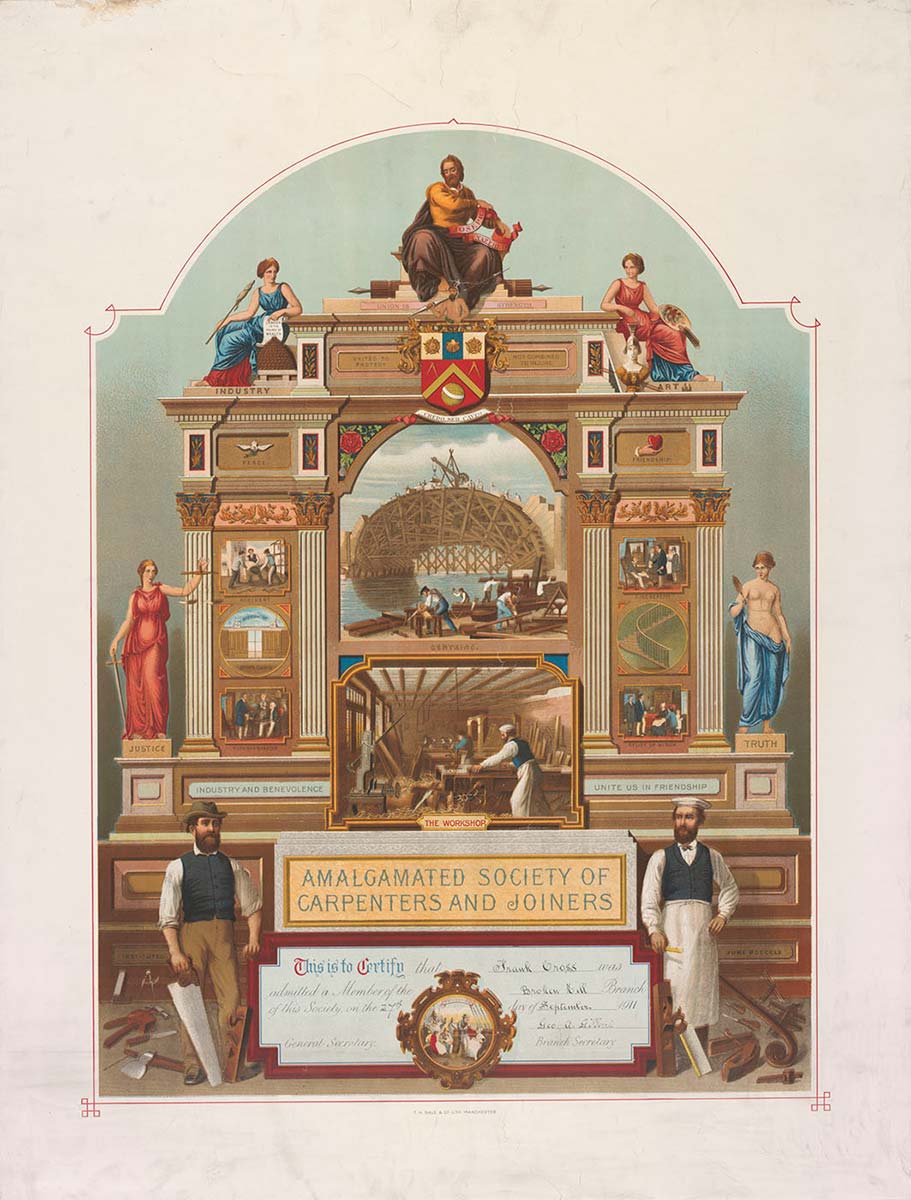This 1920s Waterside Workers’ Federation of Australia banner provided a graphic rallying point for the hundreds of Sydney wharf workers who belonged to one of the nation’s oldest and most controversial unions.
It is a highlight of a larger collection of trade union related material in the National Museum’s National Historical Collection.
Unity is strength

The Waterside Workers' Federation of Australia was formed in 1902, built on a number of state-based unions. It amalgamated with the Seamen's Union of Australia in 1993 and is one of Australia's oldest trade unions.
William Morris Hughes, who went on to be Prime Minister of Australia, was the union's first president. He was eventually expelled from the union in 1916 for his pro-conscription views.
The waterfront has been the site of many bitter industrial disputes. Prior to the Second World War, 'wharfies' were employed under the 'bull' system where workers were selected for jobs on a daily basis.
The work itself was backbreaking, cargoes being unloaded by hand with limited mechanical assistance. The lack of secure employment, combined with dangerous and exhausting working conditions, encourage militancy among the workforce.
Throughout the union's history, a major theme has been the struggle to stop the use of a non-union workforce on the waterfront.

Rich imagery
The trade union banner was donated to the National Museum of Australia by the Sydney branch of the Waterside Workers' Federation.
It measures more than three metres square and consists of two large oil-painted canvases joined together with a cotton border.
One side depicts a wharf scene with labourers hard at work unloading a ship. The reverse features a heroine wrapped in the Australian flag. Members are reminded that 'unity is strength'. The banner is dedicated 'In Memory of Our Fallen Members at the Front'.
Banners such as these were a major feature of May Day and Labour Day processions. Each banner was an expression of pride for individual unions and a rallying point for members.

Trade union certificates
The National Museum also holds a collection of more than 20 trade union certificates issued in Australia from 1860 to 1970.
The certificates in the Andrew Reeves collection reflect Australia's links to the British union movement and achievements including the eight hour work day.
Some of the unions represented in the collection were amalgamated or no longer exist.
A highlight is the Amalgamated Society of Engineers, Machinists, Millwrights, Smiths and Pattern Makers certificate.
It represents the prototype of British trade union certificates and provided the basis for many union certificates issued in the following century.
The certificate held by the Museum was given to William Evans, the foundation president of the Ballarat Branch of the union when it was formed in 1854.
Other union material
A tuckerbox and wharfies' hook which belonged to Aboriginal political activist and waterside worker Joe McGinness is another highlight of the National Historical Collection.
The Dr Edward Duyker collection consists of material which belonged to Dutch immigrant Harry Duyker, who worked on the Melbourne docks for more than 30 years.
The Museum's collection also includes numerous badges issued by the Waterside Workers Federation and associated organisations.
In our collection